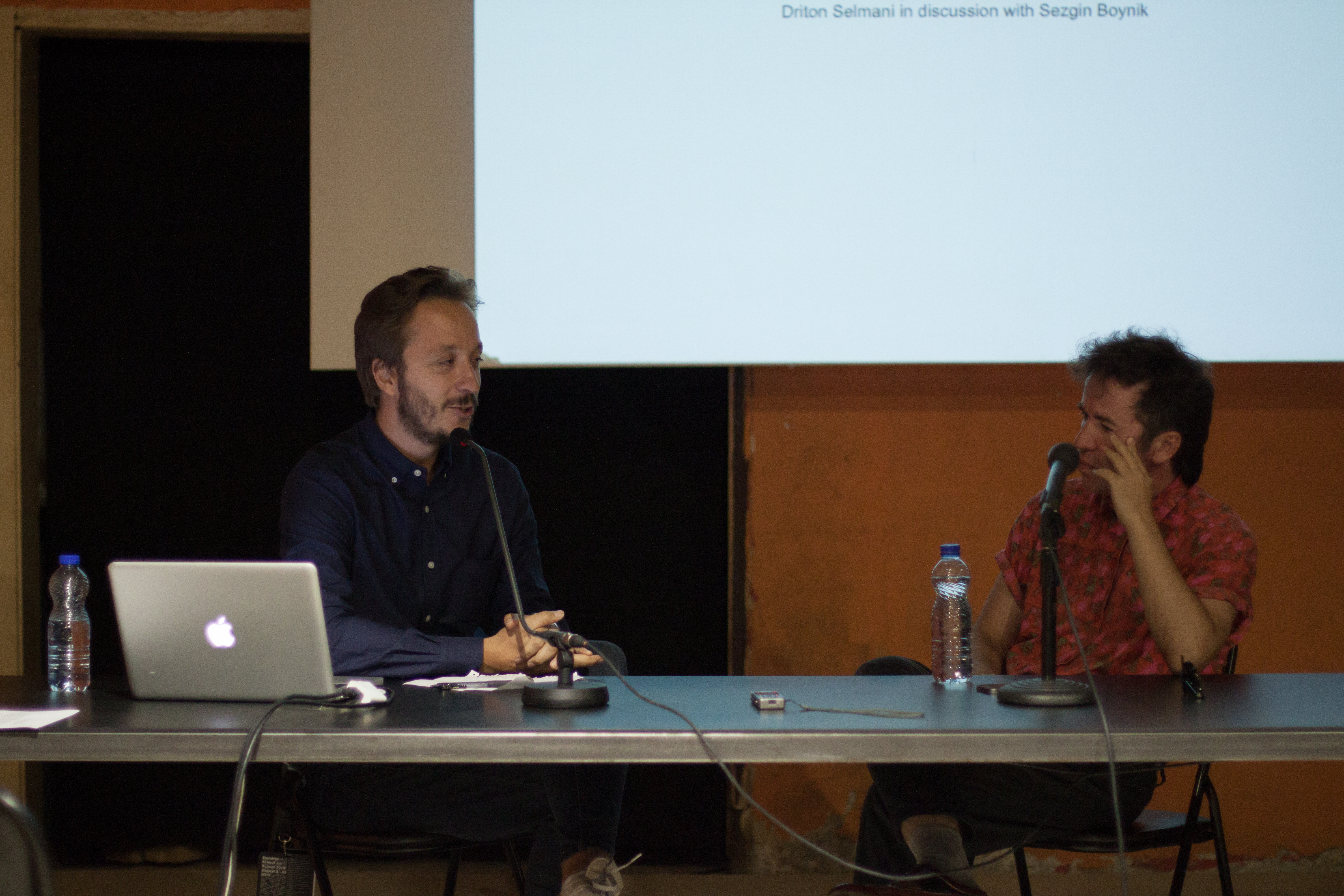
Driton Selmani at Summer School as School 2019
17 August, 2019, 20:30
Venue: Boxing Club
Summer School as School
5 - 21 August, 2019
Stacion - Center Contemporary Art Prishtina has the pleasure to announce "Red tape" by Driton Selmani, in discussion with Sezgin Boynik, part of the Public Program of Summer School as School 2019.
Flags have always been used by people and societies to shape identities. They create a sense of fellowship, build hope and optimism, feeling of pride, create stories and believe in the same. This was always the case; we may only assume it will continue.Red tapeis a reflection on how flags are used as tools to test cultural, political, and social nerves. It does not offer an opinion or calls to action; it simply reflects what is happening in the realities around us.Flags are not always raised to declare victory, triumph, or achievement. They are also raised to mark a handover, a battle loss or even accept the other's victory over an individual or society. Very often flags become synonyms for the loss of pride, trust and optimism.Today it is difficult to find countries that have not experienced such surrender.Red tapeis on a permanent quest for the image of the real, where pride and optimism seem to be drowned in the currents of the ‘game’. As a result, the flag questions the surrounding reality and describes best the political, economic and social situation:it is the flag of despair, feeling of exclusion, and lack of pride in the state, its institu-tions and symbols.
Driton Selmani born in Ferizaj, Kosovo 1987. He currently works and lives between Prishtina and Doganaj. He completed his MA studies at The Arts University Bournemouth UK. Selmani approaches the idea of perceived reality by deconstructing formations of social, political and cultural topics that have been embodied around him. At a young age, he was told to worship a country that no longer existed, which caused him to form a basis of skepticism towards any supposedly given reality. He later used this as a beneficial tool to reconstruct his beliefs into visual artefacts. In 1999, old simulacra have been replaced by new simulacra; the ornaments of a previous space have been refurbished in order to unfold with new meanings but also new uncertainties. Selmani confronts himself as a spec- tator of this “on-going event”, and positions himself as an actor, enacting his performances based on his personal histories, beliefs and doubts.
He has exhibited at solo and group exhibitions in: Stacion Center For Contemporary Art Pristina, Ludwig Múzeum in Budapest, Kunstraum Niederosterreich Vienna, Casa Contemporanea São Paulo, Mediterranea Biennial 16 Ancona, U10 Belgrade, 5th Marrakesh Biennial, Amsterdam Light Festival, Fabbrica del Vapore Milan, Bregenz Biennale, Exchiesetta Polignano a Mare, National Art Gallery Tirana, Thessaliniki Center of Contemporary Art, Eugster || Belgrade, Norrköping Light Festival...
Sezgin Boynik is a theoretician based in Helsinki. He completed his PhD on Yugoslav “Black Wave” cinema. He co-edited Nationalism and Contemporary Art: Critical Reader (MM & Exit, 2007) and History of Punk and Underground in Turkey (BAS, 2008). Recent publications include Noise After Babel: Language Unrestrained (Spector Books, 2015, with Minna Henriksson), In the Belly of the Beast: Art & Language New York Project (Rab-Rab Journal Vol. 4, No. 2, 2017, with Michael Corris) and Coiled Verbal Spring: Devices of Lenin's Language (Rab-Rab Press, 2018). He is currently working on a monograph about the theoretical and political context of Black Audio Film Collective and on the collection of Yugoslav concrete poetry. He is editor of Rab-Rab: Journal for Political and Formal Inquiries in Art, and Rab-Rab Press, an independent publishing platform based in Helsinki.